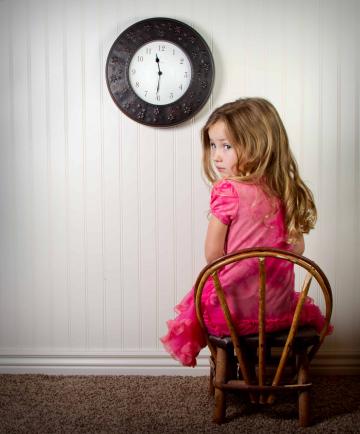
While I was working as a nanny one summer, the kids and I were about to drive away from a fun afternoon spent at the community pool when one of the kids kept unbuckling his seatbelt to get a better view outside the window.
After spending a few minutes asking him to buckle up again, I finally got in the backseat and sat down next to him.
"That's so cool that you know how to unbuckle yourself," I said. "You're such a big boy."
A smug little grin crept up on his face - a big difference from the look of panic when he saw me get in the back with him.
"Do you know how to buckle up?" I asked.
His grin faded and he grew defensive again.
"I want to see the other cars," he said.
"I know," I said. "But do you know why we buckle up when we're in the car?"
He thought for a minute, probably trying to remember what his parents had told him once upon a time.
"It's safe," he said.
"That's right," I said. "I don't want you to get hurt. Have you ever gotten hurt before?"
He told me several stories of times he got hurt: when he fell and scraped his knee or slammed his finger in a door.
"I don't like getting hurt," he said finally.
Boom. Learning moment. I explained that everyone wears seatbelts so they don't get hurt. His baby sister wears a seat belt, I wear a seatbelt and even mommy and daddy wear seatbelts.
I never had a problem getting him to buckle up after that. And I learned why it's so important to first understand the children in my life, then carefully correct behavior.
A case against time-out
Time-out has been a popular parenting technique to get children to behave. Not only is it a punishment for misbehaving, it gives children time alone to calm down in a quiet space.
But what if time-out has been harming our children all along? There are some people who argue it's more harmful than helpful, stating that disciplining children should be about teaching, not punishing. As it turns out, time-out is all about the latter.
Parents might think time-out gives their children time to think about their actions and cool off, but actually, the longer your child sits there on their own, the angrier, more agitated, and more impatient they'll become, making it more difficult to express themselves when you finally talk to them.
So when children are refusing to cooperate, what do we do instead?
Try putting your child in time-in
Instead of isolating your children, sit with them for a few minutes and try to empathize with them. Toddlers and infants desperately need their parents' affection, so when they're ignored during their time-out, it can cause severe emotional distress.
When you choose time-in, it gives your child time alone with you to calm down as they express how they're feeling. Ask them if they're upset, why they're upset and what you can do to help. Sometimes they don't want to talk and they might even want to be left alone. If this is the case, give them a few minutes on their own. This is different from time-out because you are giving them what they need to cool down, instead of isolating them against their wishes as a form of punishment.
Why does time-in work so much better than time-out?
When you take time to understand your child, they feel like their needs and feelings are considered. When you put them in time-out, they feel annoying and unwanted.
Time-in validates how your child is feeling so they don't have to feel ashamed for feeling the way they do. They also won't feel isolated as you try to teach them something.
Time-in also allows the parents to keep control of the situation. When a child is in time-out, the child still has control because they can scream and cry as much as they want. It's normal for a parent to feel as though their child is out of control during time-out. But when you choose time-in over time-out, you have better influence over your child's behavior.
Also, talking to your child will give you time to explain why you have certain rules or why they need to behave a certain way. Understanding will help your child learn the appropriate way to react and handle their emotions.

